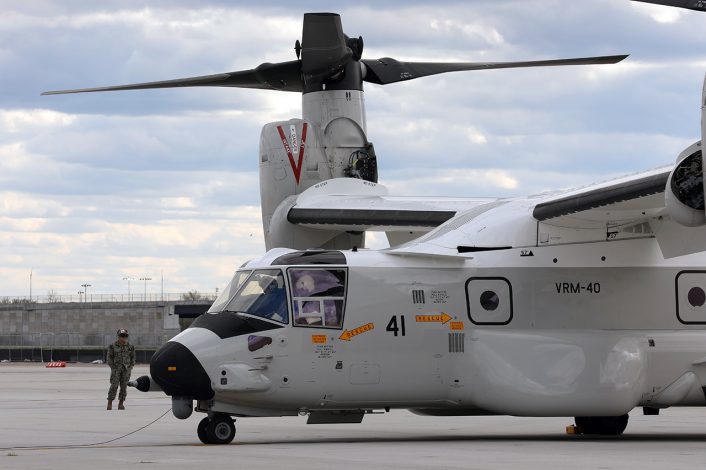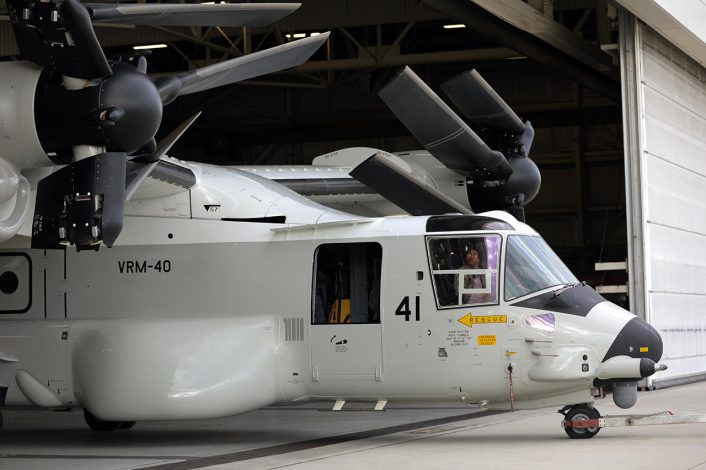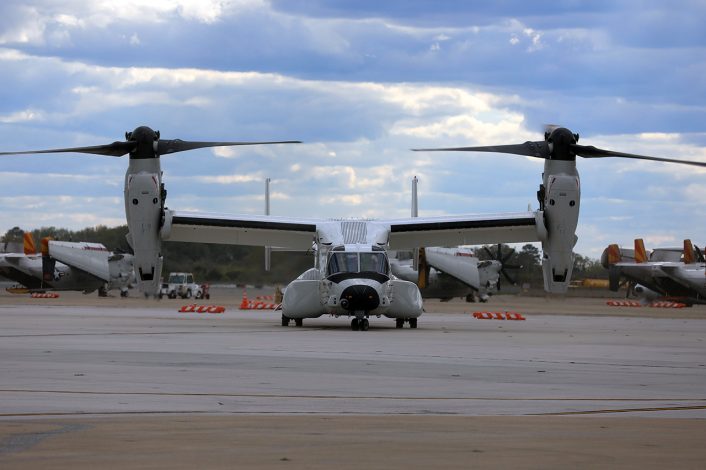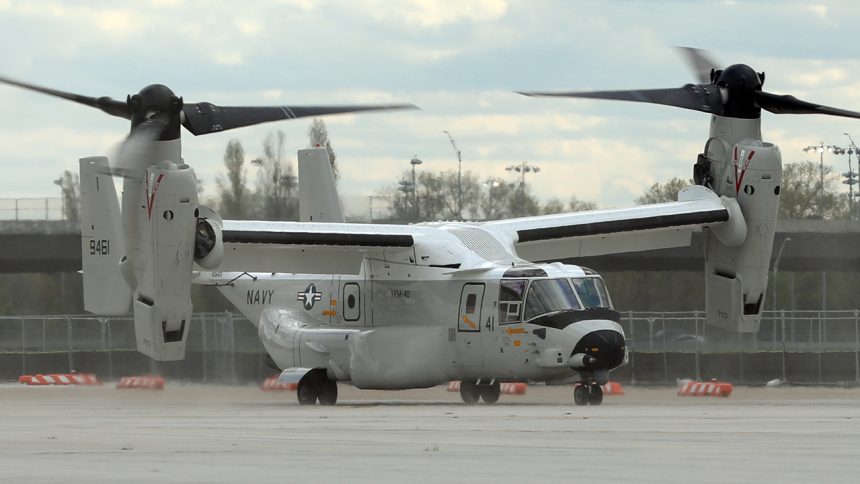The CMV-22B will provide the fleet’s medium-lift and long-range aerial logistics capability, eventually replacing the C-2A Greyhounds of Fleet Logistics Support Squadron (VRC) 40.
The first CMV-22B Osprey tilt-rotor aircraft assigned to Fleet Logistics Multi-Mission Squadron (VRM) 40, arrived to Naval Station Norfolk on Apr. 5, 2024. Rear Adm. Doug Verissimo, commander, Naval Air Force Atlantic, said “Naval Aviation is ecstatic to welcome the first CMV-22B Osprey to Norfolk. This first aircraft’s arrival symbolizes an evolution and change in Naval Aviation as we look toward the future. The event represents the hard work and stamina of our aviators, aircrewmen, maintainers and sustainment personnel in the VRM community.”
The aircraft is the first to be taken on charge by VRM-40 which relocated to Naval Station Norfolk from Naval Air Station (NAS) North Island in preparation to provide fleet logistic aviation assets to the Atlantic Fleet beginning in 2025. The personnel had already relocated in February. More Ospreys are due to join the unit in the summer of 2024.

When fully operational, the CMV-22B of VRM-40 will support seven nuclear-powered aircraft carriers under Naval Air Force Atlantic, responsibility.
The VRM-40 “Mighty Bison” were established aside their existing sister squadron, VRM-30, and the training squadron, VRM-50, at NAS North Island in March 2022, in anticipation of the delivery of the first aircraft and the transition of the fleet’s medium-lift and long-range aerial logistics from the C-2A Greyhound to the CMV-22B Osprey fleet.
CODsprey
The CMV-22B “CODsprey” (as some nicknamed the new aircraft) is a special variant of the V-22 Osprey whose most notable structural difference is the presence of the fuel tank extentions to the forward portion of the sponsons on both sides of the fuselage.
In fact, compared to the current aircraft, the C-2A Greyhound, the CMV-22B has an increased range along with more cargo capacity, enhanced beyond-line-of-sight HF communications, improved fuel dump capability and offers quicker cargo loading and unloading, according to the Navy. The CMV-22 is also reportedly quieter than the C-2, except during the transition from forward flight to hover and vice-versa.
The CMV-22B is capable of transporting up to 6,000 pounds of cargo/personnel to a 1,150 NM range.

Moreover, while the C-2 Greyhound requires a trap landing on the flight deck and a catapult launch to get on and off a flattop, the Osprey can land vertically, just like a helicopter, meaning it can land on any ship’s flight deck that is strong enough to support the weight and heat of the aircraft. Moreover, its footprint on the always crowded deck is reduced if compared to that of a C-2. Finally, the CMV-22B is technically capable of moving goods and people around the entire strike group as needed, compared to the Greyhound, which can only make deliveries between the shore and the carrier.
Another interesting peculiarity of the CMV-22B is the ability of internally transporting the F-35C Lightning II’s Pratt & Whitney F135-PW-100 engine internally, one of the key points that led to the choice of the Osprey for the COD mission, as it was too large to fit inside the C-2’s cargo bay.
C-2A Greyhound replacement
The CMV-22B declared Initial Operational Capability (IOC) in 2021. While the Program of Record has 48 CMV-22 projected, the Navy currently plans to procure only 44 aircraft.
The fleet, along with the V-22 of all types operated by the U.S. Air Force and Marine Corps, as well as the ones of the Japan Ground Self Defense Force, were grounded following the crash that involved a USAF CV-22B off the coast of Yakushima Island, Japan, on Nov. 29, 2023. The worldwide standdown was ordered after preliminary investigation information indicated a potential materiel failure caused the CV-22B crash, killing 8 crew members.

Following the grounding, the U.S. Navy surged the last C-2A Greyhound squadron, Fleet Logistics Support (VRC) 40, to swap out the embarked CMV-22 with the C-2 in order to continue to meet the Carrier Onboard Delivery mission. The C-2As replaced the new CMV-22B Osprey, with the East Coast’s VRC-40 flying the COD mission for the West Coast carriers USS Carl Vinson and USS Theodore Roosevelt.
The grounding was lifted on Mar. 8, 2024.
Due in the first Quarter of 2024 (but not yet disclosed) was also the second, highly anticipated Follow-On Operational Test and Evaluation (FOT&E) of the type, that should re-assess the operational suitability of the CMV-22B after the first one last year highlighted failures in many subsystems (with the ice protection system accounting for 44 percent of the total operational mission failures) so much so the variant was declared “not operationally suitable“.









